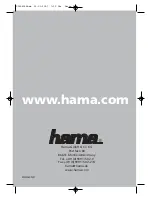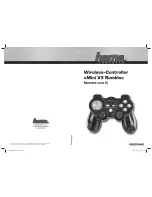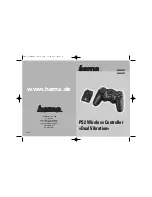
➄
Basic 6250 Features
51
Z Channel
Active Region
CCW Edge
of Home
Home Active
Region
CW Edge
of Home
Velocity
CCW
Limit
Initial
Position
CW
Limit
Position
Figure K. Homing in a CCW Direction (
HOM1
) with
HOMBAC1
,
HOMEDG1
,
HOMDF1
Z Channel
Active Region
CCW Edge
of Home
Home Active
Region
CW Edge
of Home
Velocity
CCW
Limit
Initial
Position
CW
Limit
Position
Figure L. Homing in a CCW Direction (
HOM1
) with
HOMBAC1
,
HOMEDGØ
,
HOMDFØ
Z Channel
Active Region
CCW Edge
of Home
Home Active
Region
CW Edge
of Home
Velocity
CCW
Limit
Initial
Position
CW
Limit
Position
Figure M. Homing in a CCW Direction (
HOM1
) with
HOMBAC1
,
HOMEDGØ
,
HOMDFØ
Z Channel
Active Region
CCW Edge
of Home
Home Active
Region
CW Edge
of Home
Velocity
CCW
Limit
Initial
Position
CW
Limit
Position
Figure N. Homing in a CW Direction (
HOMØ
) with
HOMBACØ
,
HOMEDGØ
,
HOMDFØ
Z Channel
Active Region
CCW Edge
of Home
Home Active
Region
CW Edge
of Home
Velocity
CCW
Limit
Initial
Position
CW
Limit
Position
Figure O. Homing in a CW Direction (
HOMØ
) with
HOMBACØ
,
HOMEDGØ
,
HOMDF1
Positioning Modes
The 6250 can be programmed to position in either the preset (incremental or absolute) mode or
the continuous mode. You should select the mode that will be most convenient for your
application. For example, a repetitive cut-to-length application requires incremental
positioning. X-Y positioning, on the other hand, is better served in the absolute mode.
Continuous mode is useful for applications that require constant movement of the load based
on internal conditions or inputs, not distance.
Refer also to the
Scaling
section above.
Positioning modes require acceleration, deceleration, velocity, and distance commands
(continuous mode does not require distance). The following table identifies these commands
and their units of measure, and which scaling command affects them.
Parameter
Command
Command Value expressed in:
Units
or
Scaling Ratio set with this command:
Acceleration
A
revs per second
2
(rps
2
)
SCLA
Deceleration
AD
revs per second
2
(rps
2
)
SCLA
Velocity
V
revs per second (rps)
SCLV
Distance
D
steps
SCLD
Preset Mode
A preset move is a point-to-point move of a specified distance. You can select preset moves
by putting the 6250 into preset mode (cancelling continuous mode) using the
MCØ
command.
Preset moves allow you to position the motor in relation to the motor's previous stopped
position (incremental mode—enabled with the
MAØ
command) or in relation to a defined zero
reference position (absolute mode—enabled with the
MA1
command).
















































